I awoke just after Pasco and went to get the boxed breakfast offered to sleeping car passengers on the Portland section of the Empire Builder. However, since it was a ham and cheese sandwich, I could not eat that so I had to buy a cinnamon roll instead. I relaxed while watching the view on the land side of the Columbia River Gorge until the fresh air stop at Wishram, where I detrained in Wishram on a non-windy morning.
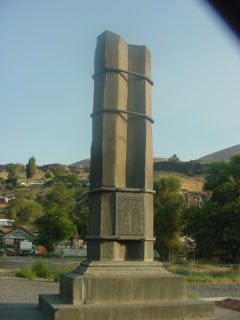
I had never noticed the Pioneer Memorial before, which stands 100 feet east of the station along the mainline track. It consists of several basalt columns bound together with an iron cable; on it is a bronze plaque bearing the name of pathfinders and pioneers, beginning with Meriwether Lewis and ending with John C. Fremont. The monument was erected in 1926 by the Great Northern Railroad, with which the Spokane, Portland and Seattle Railroad is closely affiliated.
From page 6 of the July 15, 1926 The Goldendale Sentinel is the following "PIONEER MONUMENT TO BE DEDICATED AT WISHRAM. Today, July 15, a Great Northern Railway train, carrying members of the Columbia River Historical Expedition of 1926, will leave Chicago to do honor to certain early explorers, traders and pioneers who rendered valuable services in opening up the Northwest to civilization, and to dedicate permanent monuments to commemorate events of outstanding historical significance. The party is composed of a group of distinguished historians and writers and the winners of the High School Oratorical contests on "The French Pioneers in America". The party has been organized under the leadership of the governors of North Dakota, Montana, Idaho, Washington and Oregon, in cooperation with the historical societies of these states.
The itinerary includes the dates of from July 15 to July 27, and, among the historical sections to be visited and of interest locally, is Wishram, on the S.P. & S. railroad in Klickitat county. According to the schedule, a stop at Wishram will be made on Tuesday, July 20, the special train being scheduled to arrive there on 8:30 a.m. and to depart at 11 a.m. Formerly this place was called Fallbridge, but the name was changed to Wishram recently to perpetuate the memory of the important Indian village that once stood on the banks of the Columbia somewhere in the vicinity of the present town of Wishram, made famous by Washington Irving in his Astoria.
To this ancient village came the tribes of the sea coast and the nomads of the mountains to trade for salmon, beadwork and other articles. Nearly every exploring and trading expedition into the Northwest stopped there to barter with these aboriginal traders and to portage their canoes around the falls, and some of them, particularly Lewis and Clark and the Astorians, gave detailed descriptions of the place. To honor these many pioneers, both men and women come out who stop to that at the original Wishram, the Columbia River Historical Expedition will dedicate an appropriate monument, composed of rock taken from the majestic palisades of basalt which line the Columbia for many miles. At the ceremony, Judge Charles H. Carey of Portland, will be the principal speaker. George Mennenick, of Yakima county, chief of the Federated Indian Tribes, well known locally, will speak for the Indians."
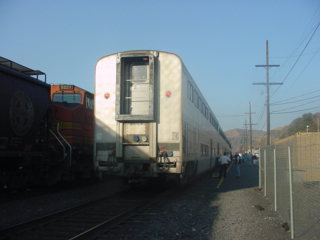
Our train sat in Wishram.

Great Northern 4-8-2 2507 built by Baldwin in 1923, retired in 1957 and sold to the Seattle, Portland & Spokane. It was donated to the County of Klickitat and went on display at Maryhill, Washington, in 1966. After an unsuccessful restoration effort at Pasco, Washington, it was repainted in 2002 and moved to its current location in 2003.
The Empire Builder departed Wishram on time, bound for points west. I decided to work on yesterday's story as we made our way to Portland this morning and take pictures as needed going west through the Columbia River Gorge.
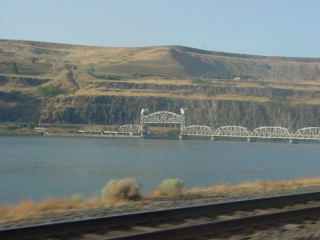
The Inside Gateway bridge that takes the former Oregon Trunk to Bend and Klamath Falls. The Oregon Trunk Railway was incorporated in 1905 to build from the confluence of the Deschutes River with the Columbia, south into Oregon timber country and potentially into California. It came under James J. Hill control in 1908, with Edward Harriman promoting a competing project. Hill's and Harriman's forces conducted legal and physical blocking maneuvers of each other in the Deschutes Canyon until after Harriman died on September 9, 1909. Agreements with the successor UP management were reached in February and May of 1910 that settled things. OT construction could proceed, with Union Pacific given trackage rights on the OT where it desired and OT allowed to cross above UP's Columbia's south bank main line where OT would be bridging south into Oregon from Fallbridge, Washington, now Wishram. The Wishram bridge was placed in service on January 5, 1912, and the OT was completed to Bend, Oregon, 152 miles from Wishram, in September 1911.

Horsethief Lake.
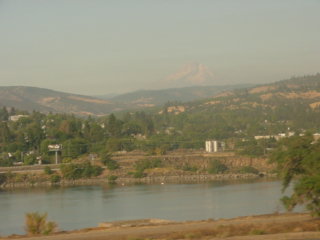
Mount Hood.
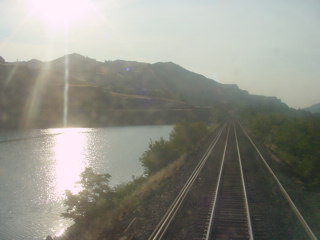
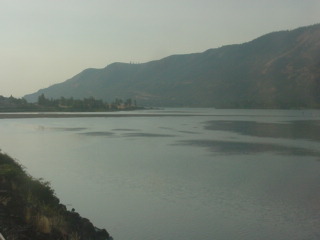
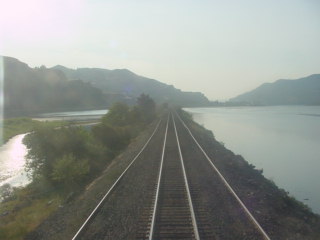
Views as we proceeded west down the Columbia River Gorge.

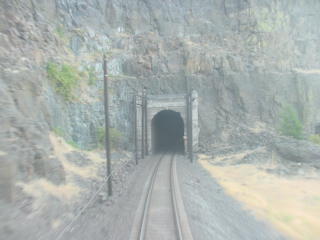
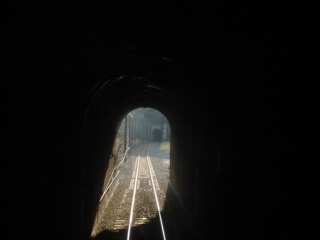
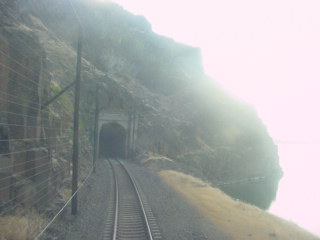
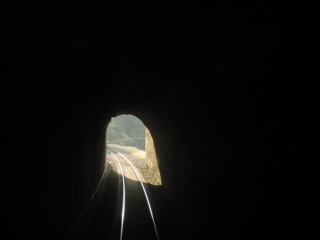
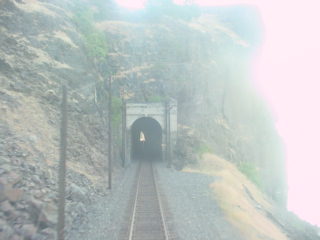
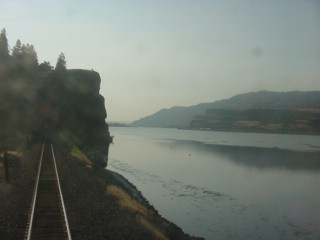
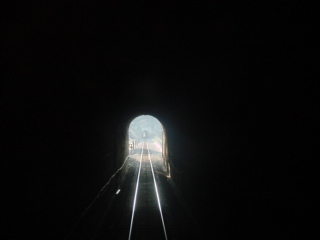
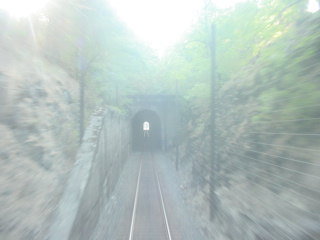
Our train passed through five tunnels in a short span of time.
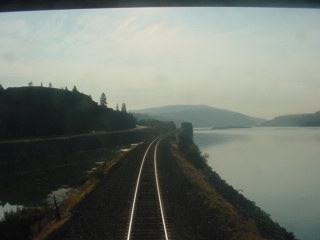
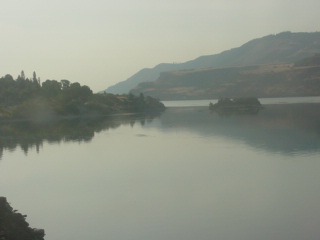
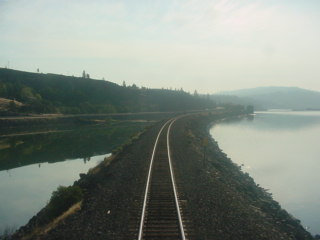
Looking back.
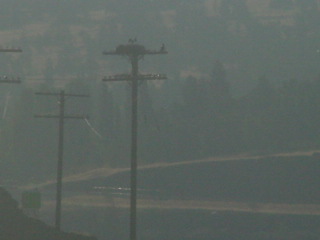
Birds live in their nests on trackside poles in the Columbia River Gorge.
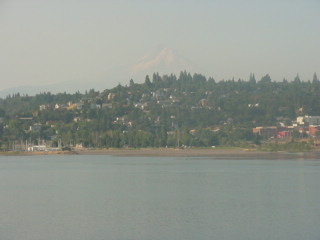
Mount Hood.
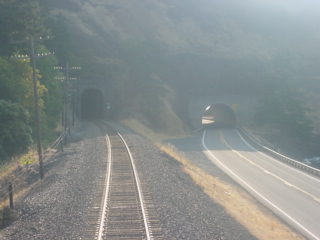
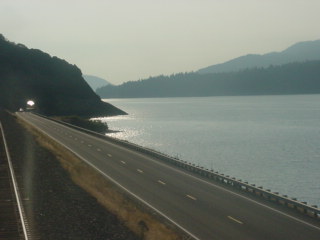
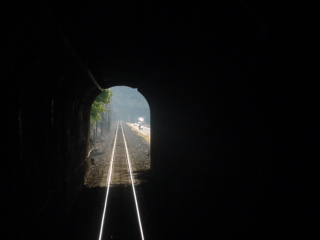
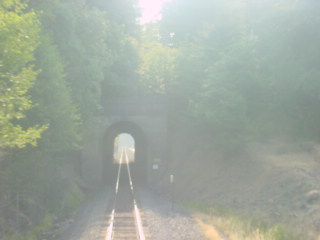
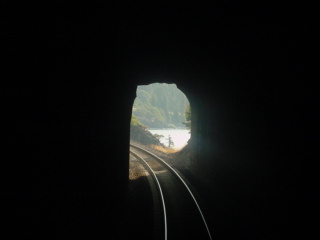
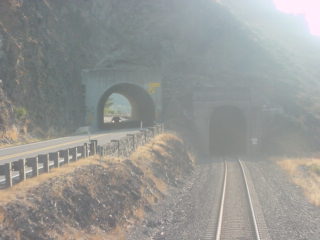
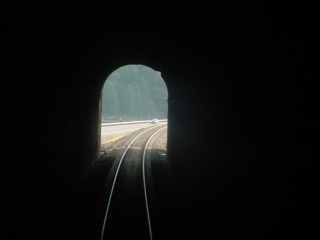
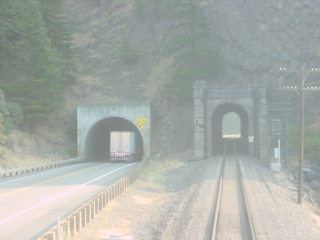
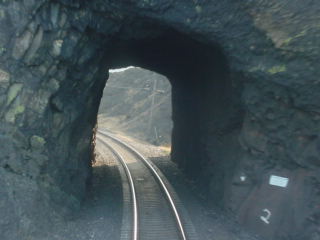
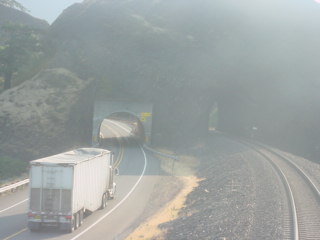
More tunnels near Cook, Washington.
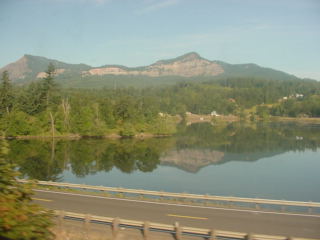
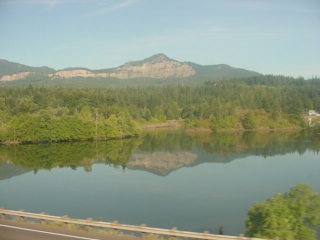

Sometimes the view on the land side of the Gorge can be quite spectacular.
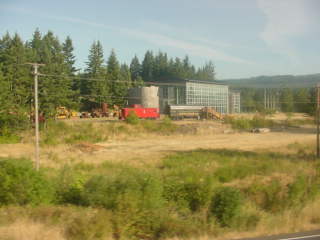
Spokane, Portland and Seattle F9A 802, nee Northern Pacific 7013D built by Electro-Motive Division in 1956 at the Columbia River Gorge Discovery Centre. I worked on the story all the way to Vancouver, where I finished it just before our station stop there.
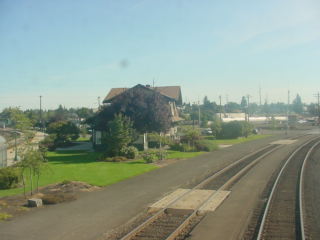
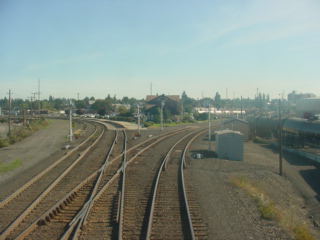
Our train departed for the final stop of Portland Union Station.
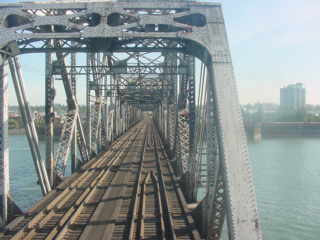
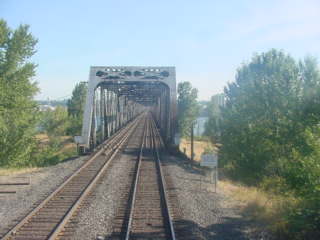
First we crossed the Columbia River into the State of Oregon.
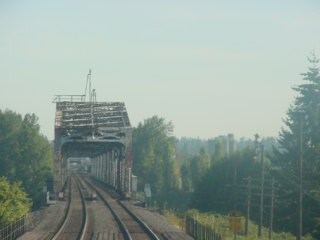
The Columbia Slough was crossed next.
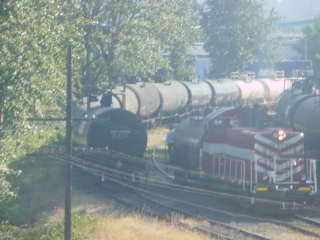
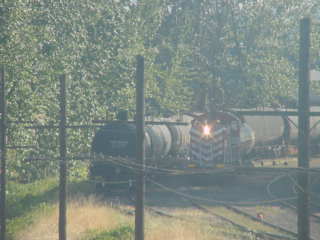
I finally saw the motive power of Portland Terminal Railroad that uses these tracks.
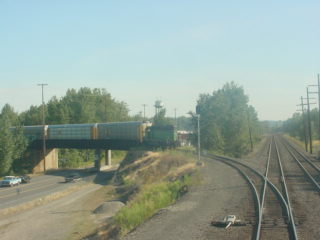
A BNSF local waited for us to clear the mainline.
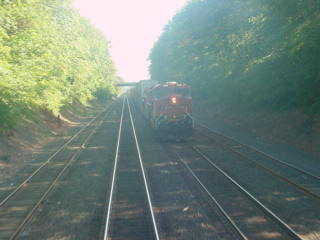
BNSF 770 West heading to Lake Yard in Portland.
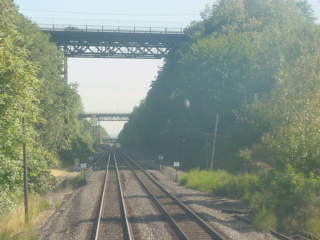
We traversed this deep cut and under North Columbia Boulevard.
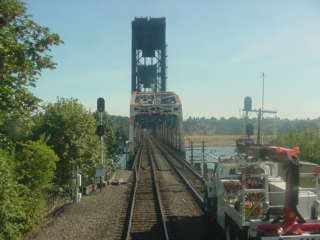
The Willamette River bridge before we ran the rest of the way into Portland Union Station, arriving there eight minutes early.
Portland 8/18/2009I detrained and went to the First Class Lounge in the station and after I checked in with the agent, she took me to the router and I plugged in to get on the Internet then uploaded two stories and called Winston Walker to let him know that they wre ready to proof. Within the hour, they were proofed and uploaded to my website. Now hungry, I asked the agent about a good place to eat and she gave me a map showing where Fuller's Coffee Shop was. I walked the ten minutes to it and ordered a steak sandwich, which was excellent then returned to the lounge and accessed the Internet and sat by a window to watch an expected show.
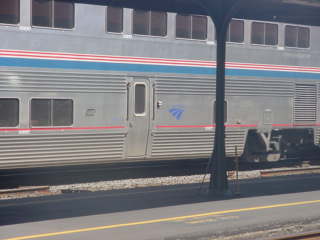
There was a piece of track missing near the Empire Builder which was sitting there until they wyed the train later.
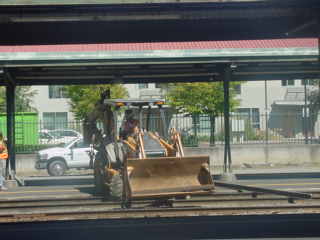
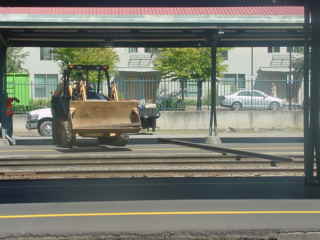
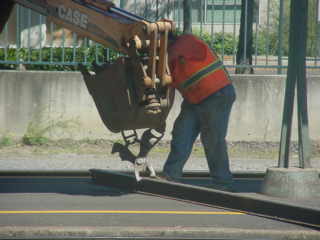
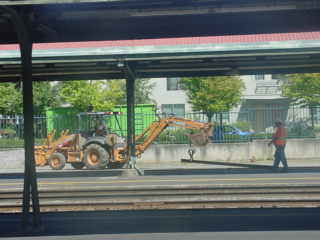
This tractor was amusing to watch as we waited for a twenty-minute late Coast Starlight.
Coast Starlight 11 8/18/2009The Coast Starlight arrived with P42DCs 181 and 25, baggage 1161, transition 39030, sleepers 32058, 32063 and 32047, Pacific Parlour Car 39970 "Columbia Valley", diner 38068, lounge 33034 with coaches 34006, 34037, 34063, 34048 and 34101. I was booked into Car 1130, the 32047, Room 2 with Bob as my Sleeping Car Attendant. We departed Portland twenty minutes late.
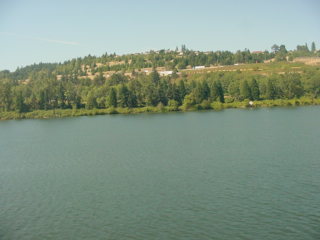
The Willamette River as made our way out of town. At Coalco, we took the siding and waited eighteen minutes for the northbound Coast Starlight.
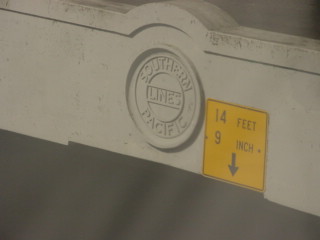
Coming into Salem, this Sunset emblem is proof that the Southern Pacific lives on. Later at Marion, we were delayed by Union Pacific 5456 East.
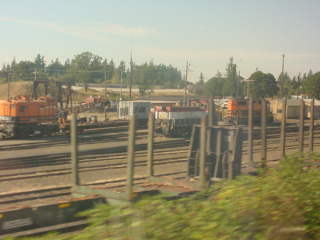
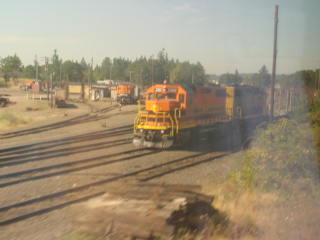
As we approached Albany, we passed the Willamette and Pacific Railroad's yard then at 6:00 PM, I went to the dining car and was seated with a former student teacher and his wife who used to teach at McFadden Intermediate, the school where I worked from 1995 to 2009. We were eating when the train arrived at Eugene and I had the Braised Flat Iron Bordelaise and vanilla ice cream for dessert. After dining, I watched "Led Zeppelin Live" as the train climbed the Cascade Mountains. I called it a night after Cascade Summit and made up my room for the final night on the train that was running one hour and twenty minutes late.
8/19/2009I awoke as the train curved into Sacramento, dresssed and went outside towards the baggage car and found my brother Bruce. We departed on time and I was in the dining car enjoying French Toast and sausage patties for breakfast as we ran to Davis and Martinez, where I could not keep my eyes open so went back to bed. I woke up after Oakland then the train had to stop at Haywood to let a Capitol Corridor train pass on its way east. Later I had my camera at the ready as we neared the ghost town of Alviso.
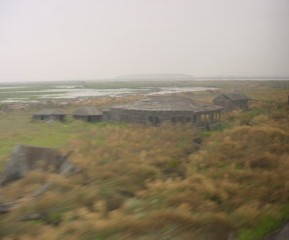
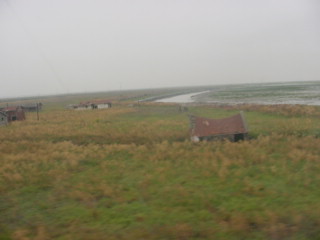
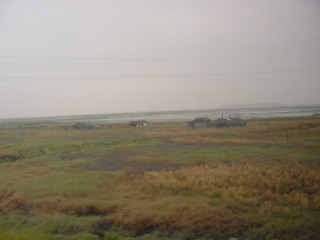
Views of Alviso, which once served as San Jose's port city and the now closed Bayside Canning Company (once the third largest cannery in the nation) serves as a reminder of that history. Beyond Alviso's Historic District, exploration awaits at Don Edwards San Francisco Bay National Wildlife Refuge, the first urban wildlife refuge in the United States. The refuge includes 30,000 acres of open bay, salt ponds, salt marsh, mudflats and a ghost town. The ghost town drawbridge is accessible via the Union Pacific Railroad tracks and beckons many curious travellers.
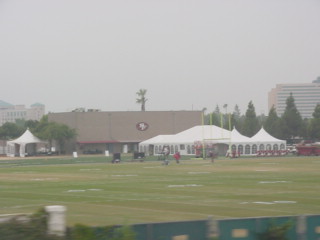
The San Francisco 49er's practice facility as we neared San Jose, our next fresh air stop of the trip.
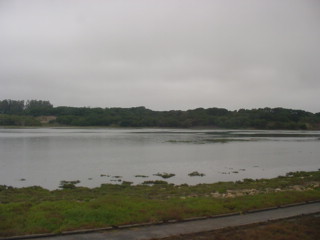
Elkhorn Slough on the way to Salinas.
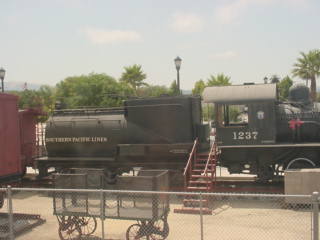
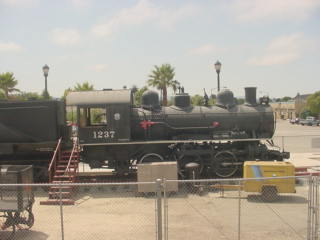
Southern Pacific 0-6-0 1237 built by Baldwin in 1918.
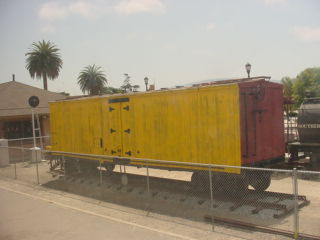
Fruit Growers Express refrigerator car built in 1923.
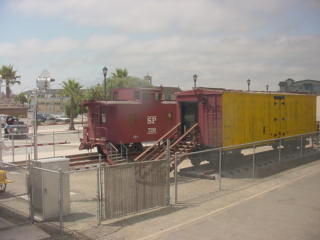
Southern Pacific caboose 726 built by the railroad in 1916. I watched the Million Mile DVDs as the train ran up the Salinas Valley.
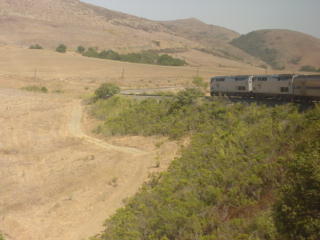
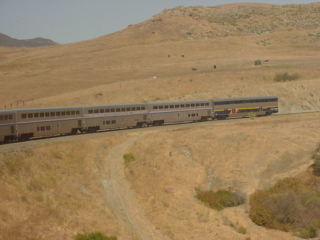
Later, the Coast Starlight on the Goldtree Horseshoe Curve and you can see California Car 8088 which was added at Oakland. We made our way to San Luis Obispo and after a fresh air stop, we departed twenty minutes late. Next I watched the "Motley Crue Live" DVD.
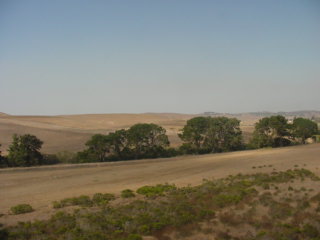
Trees after we passed through Casmalia and en route to the Coast Line.
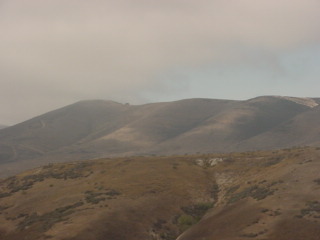
The low clouds had me worried.
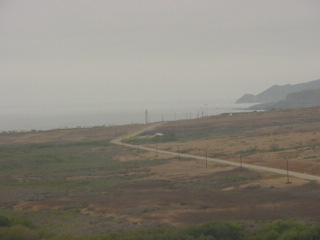
But then I saw the Pacific Ocean and knew everything would be fine.
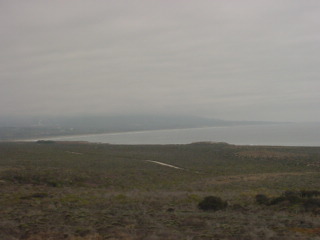
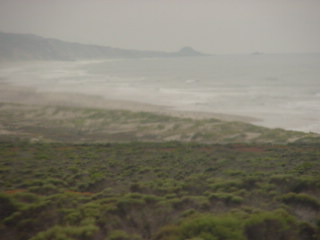
On the way to Surf and the crossing of the Santa Ynez River.
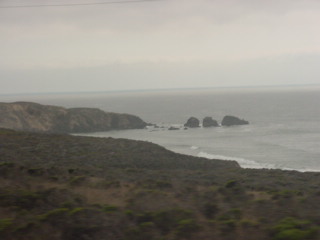
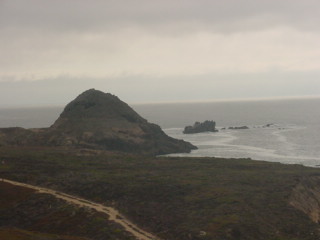
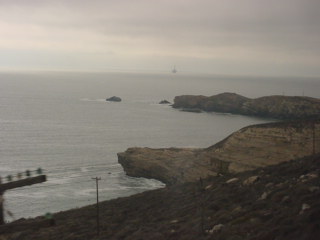
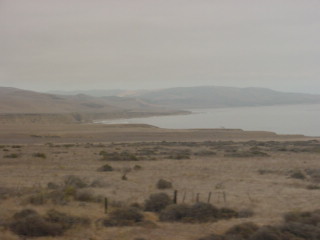
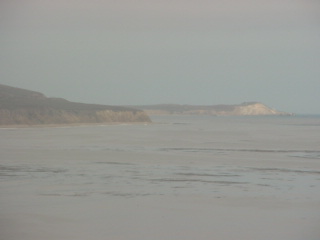

Scenes along the coast just before dinner, which I had with my friends from last night and enjoyed the same mealt, the Braised Flat Iron Bordelaise. At Santa Barbara, I took my final fresh air break of the trip.
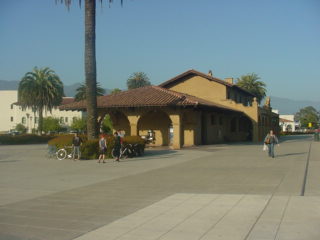
The Southern Pacific Santa Barbara station built in 1905.
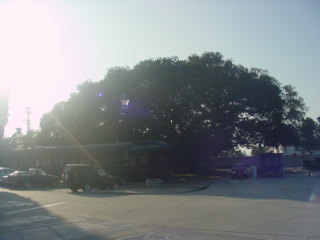
The world's largest fig tree the Moreton Bay Fig Tree. A seaman visiting Santa Barbara in 1876 presented a seedling of an Australian Moreton Bay fig tree to a local girl who planted it at 201 State Street. After the girl moved away a year later, her girlfriend, Adeline Crabb, transplanted the tree to the corner of Montecito and Chapala streets, just a few blocks from the ocean, on land then owned by the Southern Pacific Transportation Company. The tree was officially designated as a historic landmark in 1970 and the property was deeded to the City of Santa Barbara in 1976. The tree has since been placed on the California Register of Big Trees. The roots are protected by a chain barrier the size of the canopy.
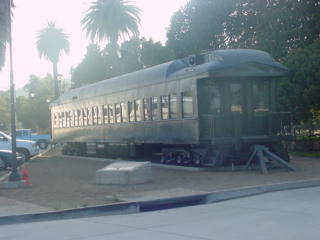
Southern Pacific business car 142 "Santa Barbara", ex. El Paso and South Western coach 675 built by Pullman in 1914. We departed five minutes late.
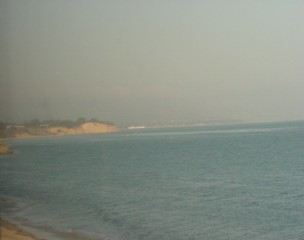
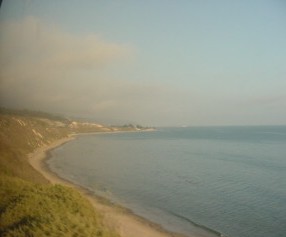
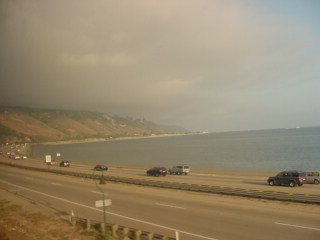
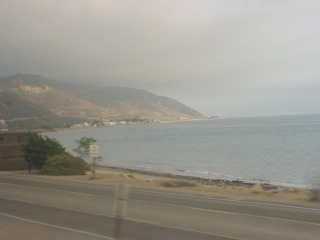
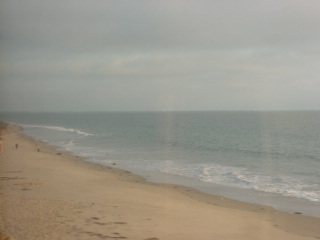
Scenes along the coast on the way to Ventura, where we turned inland to our next stop at Oxnard.
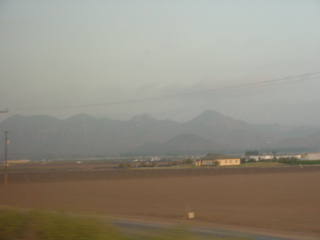
The western end of the Santa Monica Mountains. We ran to Strathearn where we met a Metrolink train. After Simi Valley, we went into the Santa Susana siding to meet Pacific Surfliner 785 then ran to our next stop of Van Nuys before continuing on to Los Angeles Union Station, but took the route via the east bank of the Los Angeles River, arriving at 8:53 PM, seven minutes, early ending a great Amtrak trip. I walked over to Track 10 to wait for Pacific Surfliner 796.
Pacific Surfliner 796 8/19/2009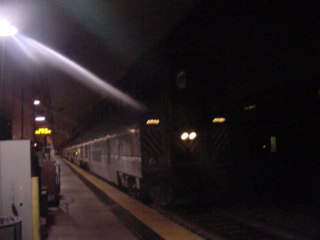
This train arrived at 9:43 PM from Goleta and I boarded, taking a lower level Pacific Business Class seat. I was out on the platform when Conductor CJ arrived and we spoke for a few minutes about our good and dear friend, the late Richard Hamilton who was the co-host of Let's Talk Trains, before our on-time departures. At Fullerton and Anaheim, I stepped off with CJ for some fresh air and we arrived a few minutes early at Santa Ana, where I detrained and walked through the station saying "Hello" to Marty, my excellent night-time Amtrak agent, before walking out to my mother's waiting van. We drove home and were passed by a BNSF local on the way.
This ends an excellent rail adventure to Wisconsin and the 2009 National Railway Historical Society convention in Duluth, Minnesota. Next year, I will see you all in Scranton, Pennsylvania.
| RETURN TO THE MAIN PAGE |